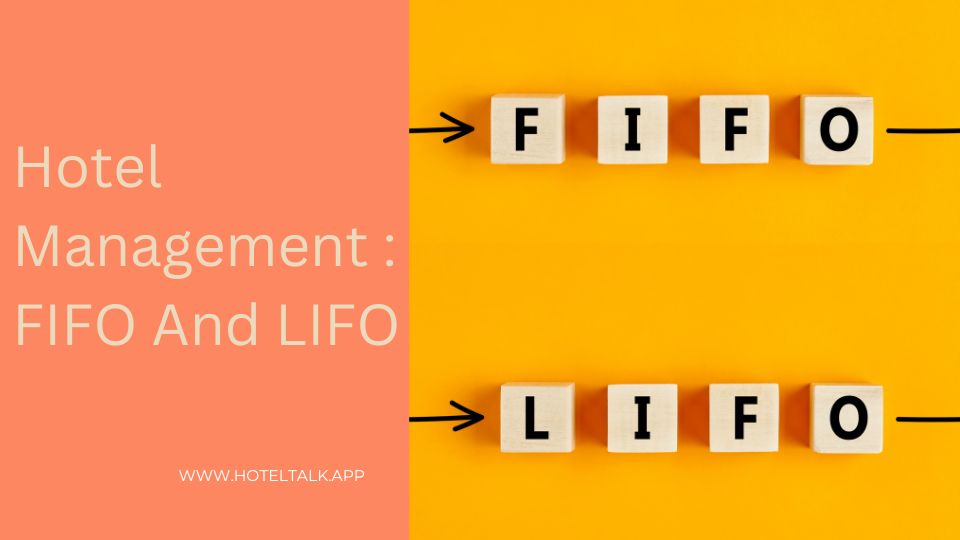FIFO : first in,first out
LIFO : last in first out
It`s an inventory management concept. as a hotel manager, usually we don`t have choice : first in, first out, to foods and linens, you can only use this policy . but we should be aware of this.especially when we sit down to review and discuss the Profit and Lost statement (P&L) monthly. Your restaurants may have good profit this month, despite the soaring of food price, so you decide not to adjust the price on the menu, but some dried foods and wines are purchased half year before. and at the same, several months later, the food price may be lower on the market, but your cost maybe goes up, because they purchase periodically. and costumers can not understand why your foods are sold at higher rate.
Example of FIFO and LIFO accounting
Suppose we have to value 120 items of our stock today (June 2009), and that they were purchased at 3 different dates and 3 different prices:
| Date | Quantity | Unitary Price (USD) |
|---|---|---|
| March 2009 | 50 | 10 |
| April 2009 | 55 | 11 |
| May 2009 | 15 | 12 |
The FIFO price starts with the oldest one. Since we have to calculate 120 items, we consider that the first 50 have a unitary value of 10 USD, (the oldest price); the next 55 will have a unitary value of 11 USD, and the remaining 15 (120-50-55) will have a unitary value of 12 USD.
Therefore, the FIFO price is 10.71 USD:
50 x 10 + 55 x 11 + 15 x 12
FIFO = ————————————— = 10.71
120
The LIFO price starts with the most recent one. Since we have to calculate 120 items, we consider that the first 52 have a unitary value of 12 USD, (the most recent price); the next 55 will have a unitary value of 11 USD, and the remaining 13 (120-52-55) will have a unitary value of 10 USD.
Therefore, the LIFO price is 11.33 USD:
52 x 12 + 55 x 11 + 13 x 10
FIFO = ————————————— = 11.33
120
As we can see, in normal economic conditions (i.e. in presence of inflation) the LIFO price is bigger than the FIFO. Indeed, the FIFO price undervalues the price of the liabilities (the 120 items in the example), and since these are smaller the FIFO price overvalues the remaining stock. On the contrary, the LIFO price undervalues the current stock because it overprices the liabilities.)
